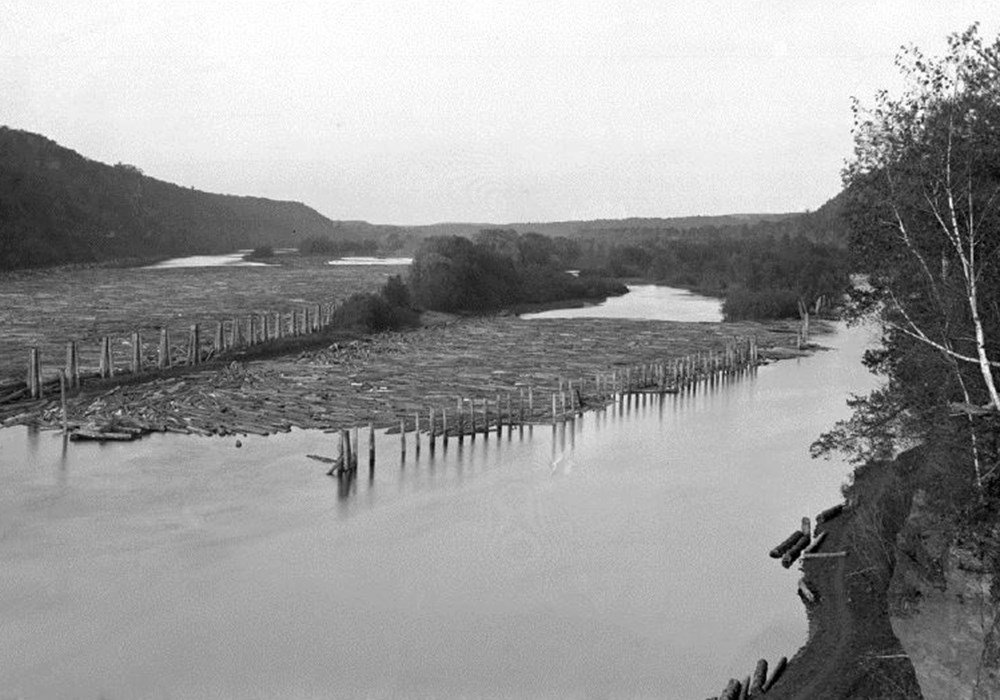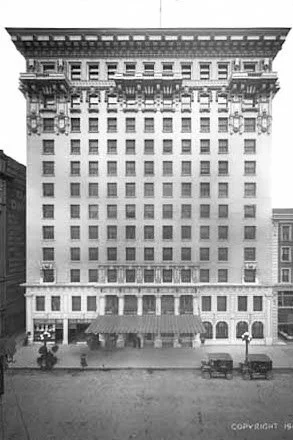Marine on St. Croix
For almost 200 years, the fur trade was a major enterprise (the only enterprise, really) in the territory that would one day become the state of Minnesota, but after decades of overhunting (and with the changing fashions of European style makers) the fur trade was having an increasingly difficult time turning a profit. When the fur trade finally collapsed in the 1830s, it was the lumber industry that quickly took its place. While one natural resource was being wiped out, entrepreneurs set their eyes on another one: the vast pine forests that blanketed the land they had been hunting in for generations.
Until 1837, the only mills allowed to legally operate in the territory were military-owned because the forests still belonged to the Ojibwe. Early schemers like Joseph Rollette and Joseph Brown - men who would later be considered Minnesota’s historical heroes - were already either stealing lumber or making “under the table” deals for the valuable White Pine and sending it downriver to St. Louis to be sawn into planks and shipped on to market.
Thousands of logs were held in the Saint Croix river at Marine Mills, waiting to be sent down to the markets in Saint Paul
Pressure from the Ojibwe to stop stealing their timber and make a fair deal weighed against fur traders’ demands for payment for goods sold to the tribes on credit, land speculators’ demands to open up the territory, and the United States government’s desperate need for tax revenue.
Marine Mills
The White Pine Treaty with the Ojibwe opened up millions of acres to legal timbering. The tribe turned over millions of acres of land. Two men from Marine, Illinois (David Hone and Lewis Judd) built the first commercial sawmill in Minnesota, the Marine Mill, which led to the founding of the village Marine Mills. (Creativity in coming up with a new name was apparently not in their wheelhouse).
If it wasn’t already in Marine Mill, they had to bring it with them. When 8 of the mill’s leadership, plus a millwright and a blacksmith arrived they brought supplies and equipment on steamboats. These brave businessmen were almost turned back when they were met by “claim jumpers”, men who said that they had claimed the land, too. The mill leaders paid the jumpers $300 to leave and they set to work building simple structures to live and work in.
Although the village was isolated on land, its position on the St. Croix River gave it great access to the outside world. Steamboats traveled up and down the river bringing supplies and a ferry crossed back and forth between Wisconsin and Minnesota bringing new settlers to the state. On land, stagecoaches finally began making deliveries in 1870.
The mill succeeded and the town grew up around it. The General Store, built in 1870; the Stone House Museum, built in 1872; the Village Hall, built in 1888; the Lutheran Church; and the Fire Hall all depended on the mill for business. Over the next half century, the mill produced 197 million board feet of lumber. For perspective - that’s about enough to build 15,600 3-bedroom houses.
So what happened? Why isn’t Marine Mills a larger town, maybe even a rival to Stillwater, Hudson or Taylor’s Falls?
The Great Log Jam
The quickest, easiest and cheapest way to transport logs from the forest to mill was to send them down the Saint Croix river. Controlling hundreds or thousands of logs as they float along the river was pretty hard to do. Log jams were just a part of the logging industry, clogging up waterways and sometimes even requiring dynamite to break them loose. In 1883, the St. Croix river was clogged for 57 straight days and, missing their contract deadlines, the Marine Mill mill was in trouble. The following year, another log jam caused by low water levels created more delays. A tornado ripped through town in September of 1884 and that was the final straw.
In 1885, the mill was bankrupt and closed. A decade later, the machinery was sold and buildings torn down. Without a mill, the village changed its name to Marine on St. Croix.
A New Era
Just as the fur trade gave way to the lumber and logging industry, the lumber mills gave way to the grain mills. A wave of Swedish immigrants came to the village in the 1870s and family farms began to supply wheat for a newly built grist mill to grind the grains into flour.
Almost 100 years later, the village and ruins of the mills were named a National Historic Landmark District encompassing more than 60 structures and 3 ruin sites. Today, the General Store is still open, the Town Hall is still in use, the fire station and dozens of historic houses provide a charming (and popular) getaway in the summer - and a shady stream and waterfall flow through the ruins of the mill that started it all.

















